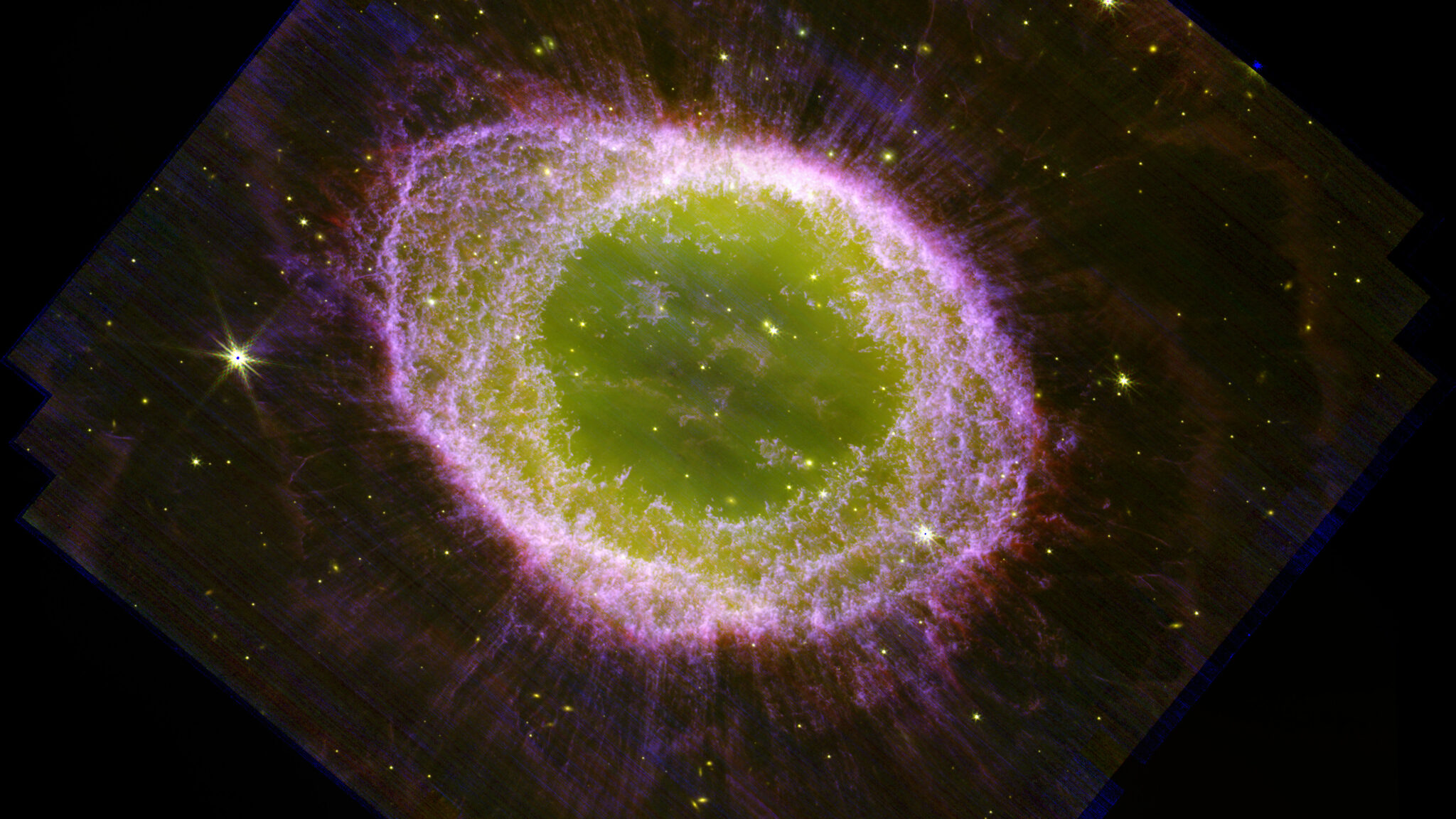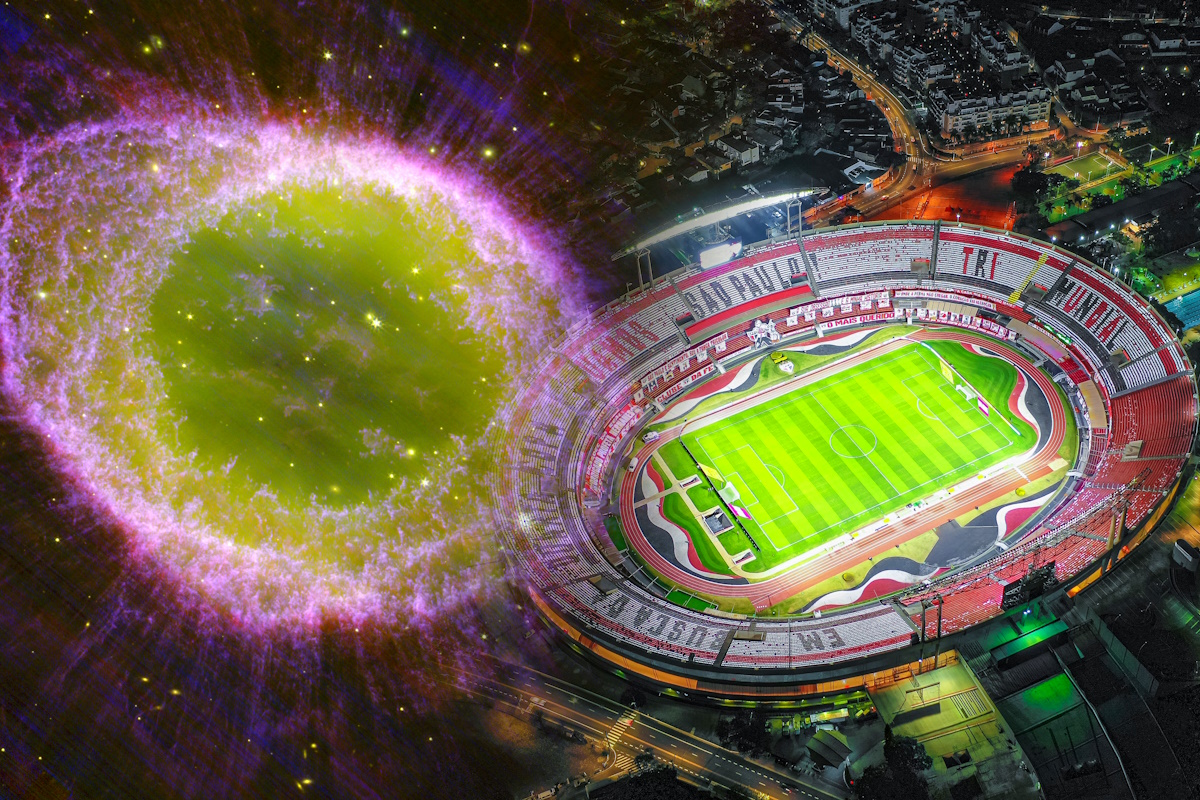A fresh photograph of the ring-shaped nebula Messier 57, obtained by the James Webb Space Telescope (JWST), reveals a real epic picture that reminds us of a sports stadium brightly lit at night. The JWST image shows a unique perspective of the Ring Nebula with previously unseen details. This nebula is located at a distance of 2,600 light-years from Earth and formed from the remnants of an exploding star.

Messier 57 was first discovered by French astronomer Charles Messier while searching for comets in January 1779. The uniqueness of Messier 57 lies in its angle of inclination, which allows us to observe it from the Earth in such an exciting form. The nebula received an extraordinary structural appearance, similar to a stadium, thanks to the matter that was pushed out of its center by the dying star. The intense radiance of green and purple colors adds to the beauty of this cosmic formation.
This is one of the most exciting images of Messier 57, which has gained popularity among amateur astrophotographers. Astronomers familiar with this nebula were surprised by the new extraordinary data provided by JWST.

Jan Cami, an astrophysicist from Western University and a participant in the JWST project, shares his delight: “I first saw the Ring Nebula as a kid through just a small telescope. I would never have thought that one day, I would be part of the team that would use the most powerful space telescope ever built, to look at this object.”
Mike Barlow, a professor at University College London and a participant in the JWST project, adds: “Webb has provided us with an extraordinary view of the Ring Nebula that we’ve never seen before. The high-resolution images not only showcase the intricate details of the nebula’s expanding shell but also reveal the inner region around the central white dwarf in exquisite clarity.”
Thanks to the observations of James Webb, we can get new scientific conclusions about the evolution and formation of planetary nebulae. Images like this help scientists understand what the future of our Solar System will be like in about 5 billion years, when the Sun turns into a white dwarf and swallows planets, including Earth. Messier 57 becomes a kind of laboratory where we can explore these phenomena of the cosmos and gain new knowledge.
Earlier we reported on how the IC 2220 nebula revealed the tragic future of our Sun.
According to sci.news
Follow us on Twitter to get the most interesting space news in time
https://twitter.com/ust_magazine

